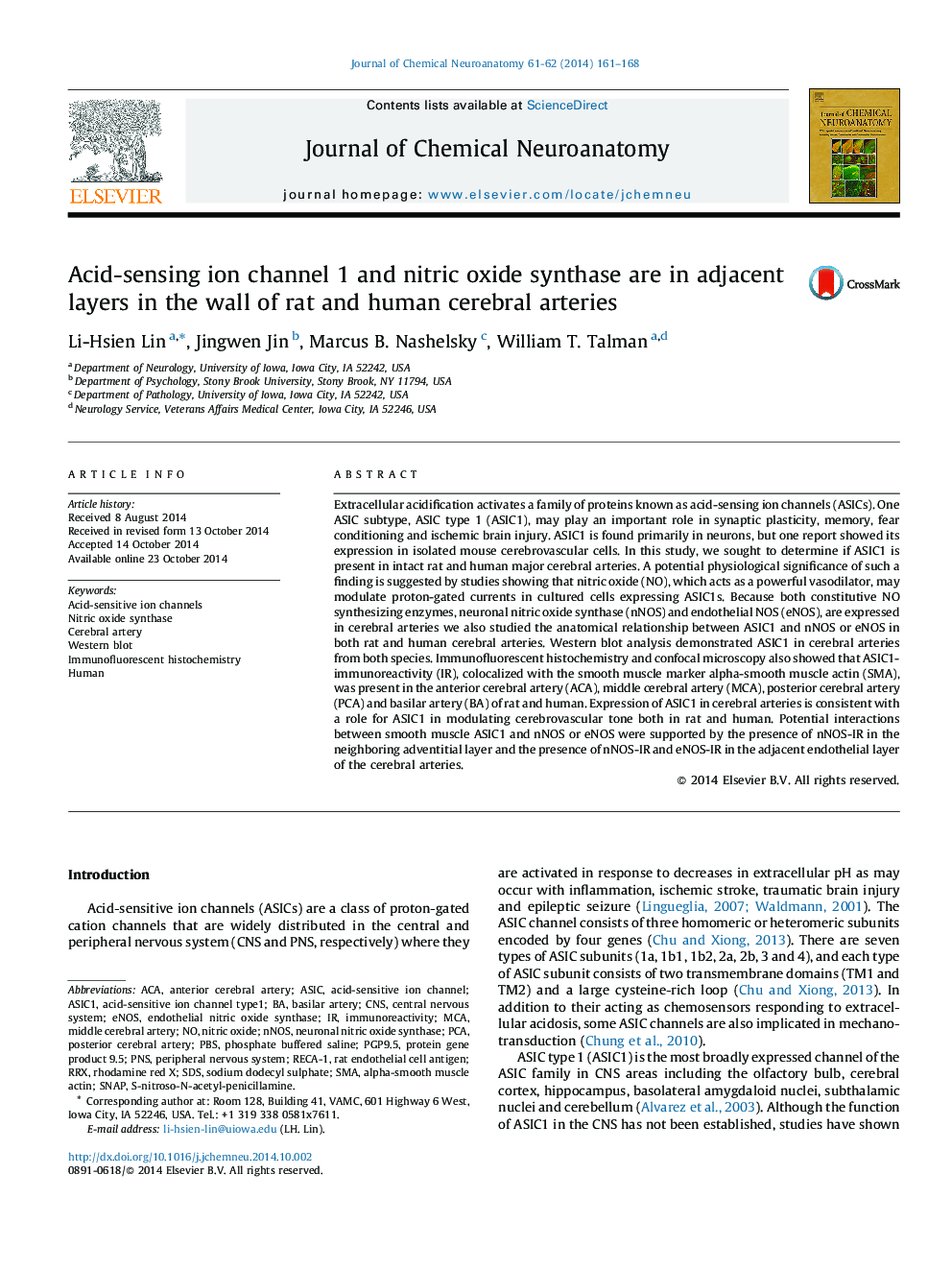| Article ID | Journal | Published Year | Pages | File Type |
|---|---|---|---|---|
| 1988787 | Journal of Chemical Neuroanatomy | 2014 | 8 Pages |
•Major cerebral arteries from rat and human were studied.•Western blot analysis demonstrated ASIC1 in these cerebral arteries.•Confocal microscopy showed ASIC1 colocalized with SMA in these arteries.•ASIC1 and nNOS were present in adjacent layers in these cerebral arteries.
Extracellular acidification activates a family of proteins known as acid-sensing ion channels (ASICs). One ASIC subtype, ASIC type 1 (ASIC1), may play an important role in synaptic plasticity, memory, fear conditioning and ischemic brain injury. ASIC1 is found primarily in neurons, but one report showed its expression in isolated mouse cerebrovascular cells. In this study, we sought to determine if ASIC1 is present in intact rat and human major cerebral arteries. A potential physiological significance of such a finding is suggested by studies showing that nitric oxide (NO), which acts as a powerful vasodilator, may modulate proton-gated currents in cultured cells expressing ASIC1s. Because both constitutive NO synthesizing enzymes, neuronal nitric oxide synthase (nNOS) and endothelial NOS (eNOS), are expressed in cerebral arteries we also studied the anatomical relationship between ASIC1 and nNOS or eNOS in both rat and human cerebral arteries. Western blot analysis demonstrated ASIC1 in cerebral arteries from both species. Immunofluorescent histochemistry and confocal microscopy also showed that ASIC1-immunoreactivity (IR), colocalized with the smooth muscle marker alpha-smooth muscle actin (SMA), was present in the anterior cerebral artery (ACA), middle cerebral artery (MCA), posterior cerebral artery (PCA) and basilar artery (BA) of rat and human. Expression of ASIC1 in cerebral arteries is consistent with a role for ASIC1 in modulating cerebrovascular tone both in rat and human. Potential interactions between smooth muscle ASIC1 and nNOS or eNOS were supported by the presence of nNOS-IR in the neighboring adventitial layer and the presence of nNOS-IR and eNOS-IR in the adjacent endothelial layer of the cerebral arteries.
